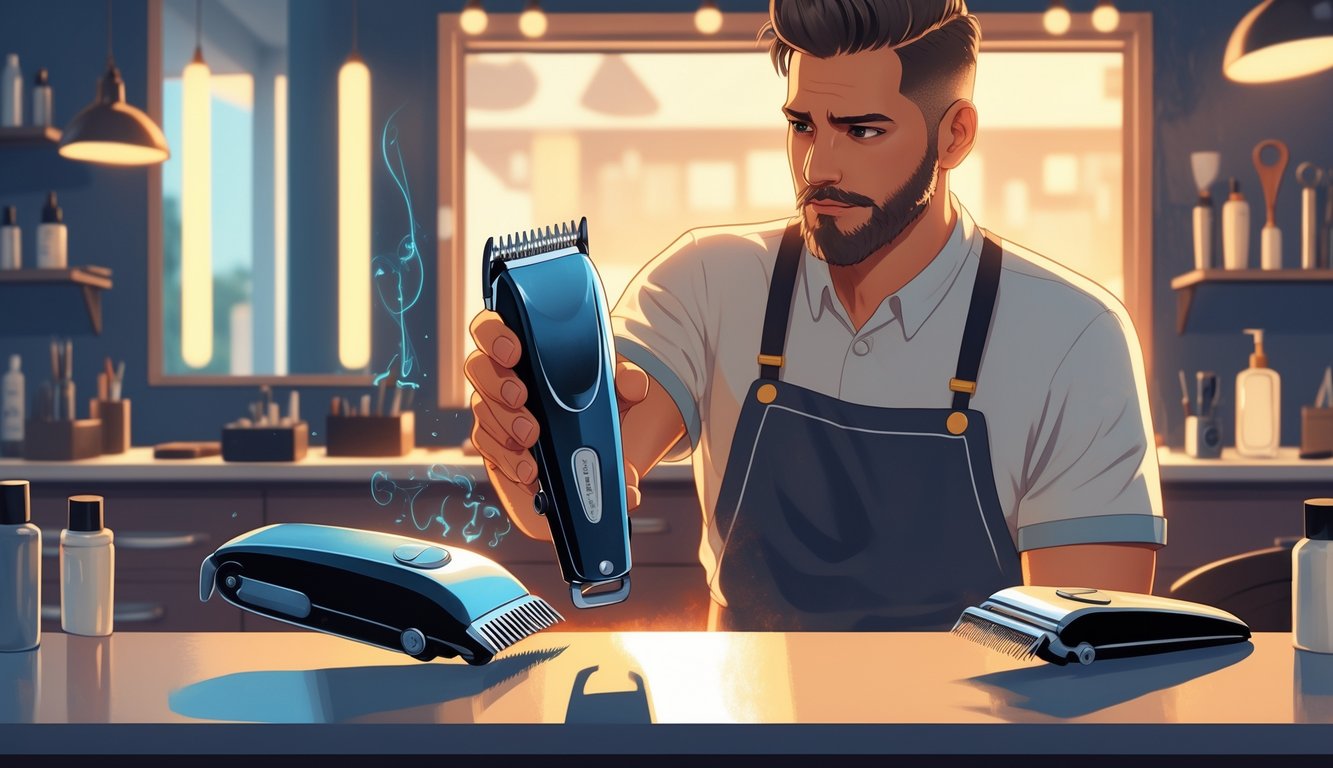
That soft hum from cheap clippers? Sounds innocent, right? Until it’s suddenly yanking out hair and someone’s yelling at me, “Why is it pulling?”—happens all the time. Cheap clippers? Honestly, they’re a wallet trap. They break, jam, dull out fast, and then, what, I’m buying a new one every few months? Seen it a thousand times. Plenty of home haircutters have too. Why risk a surprise bald spot or a clipper meltdown mid-fade when, come on, there are tools that actually last?
Guy in the shop, regular, tells me his “deal” clippers started spitting smoke after eight weeks. Is that saving money or just pretending you’re not about to pay double later? Barbers—real ones—won’t shut up about maintenance, but let’s be real: you can oil those bargain blades all day and still end up with a motor that rattles itself to death. Maybe that’s why the old-school guys nag about oiling every single cut. Not “whenever you remember.” No, every time.
Still clinging to your $20 special? Fine, but every cut gets rougher, louder, slower, and nobody ever adds up the wasted hours or the weird looks when your tools look like a hairball graveyard. Clippers scattered on the counter, stuck with hair—honestly, that’s not “quirky,” that’s just a mess. But hey, maybe someone thinks it’s art. I’ll never get why everyone’s so desperate to cut their own hair but won’t listen to a single pro tip.
Why Cheap Clippers Seem Like a Good Deal
You see a $20 clipper online and think, “Why not?” I mean, who’s buying all these—just barbers? Doubt it. The reviews are full of promises: “Ultra-smooth fade!” “Whisper-quiet!” You get that little jolt of hope—maybe this is the one. And for what? It’s just a plastic box with a motor, right? Why cough up more for a fancier sticker?
Appeal of Low Cost
Every checkout line, same thing: people freeze at the price. It’s not about the machine, it’s the number on the tag. The $20 clippers in the bargain bin? They move fast. Big box stores love to slap on “same quality, half price” banners. Meanwhile, Wahl or Andis sits up there looking all serious and expensive. Guess which one gets grabbed by someone rushing a last-minute gift or a “how hard could this be?” home cut.
It’s all marketing nonsense. “Detachable guards!” “Precision blades!” “Stainless steel!”—which, let’s be honest, is probably just shiny tin. I know a barber in Melbourne—he says nine out of ten people walk out with the cheap clippers because they think they’re getting a fade for less than lunch. Makes no sense if you check back a year later and see the graveyard of broken tools. Online, it’s the same story. Cheap clippers everywhere, beginners getting tricked, and most of them don’t last longer than a bottle of clipper oil.
Initial Performance vs. Expectations
Yeah, out of the box, everything feels good. Blades are sharp, the motor hums quietly, and you’re thinking, “Okay, maybe this is fine.” A few cuts in, it’s still okay. But then? Missed hairs, weird tugs, the guards start to feel loose. These generic brands—flooding Amazon with lookalike pro designs—sometimes fool you for a week. After that, you’re back to square one.
I tried a $25 no-name once. First day? Great. By day six, the motor sounded like it was grinding rocks. These things can’t keep up in a real shop. If I handed one to a coworker, they’d probably throw it out the window by lunch. Forums are full of barbers losing it over “fades” that just disappear—motors burning out, guards snapping, parts impossible to find. It’s not just me being picky. Reviews keep saying the same thing: you get a couple decent cuts, then it all goes downhill. So, does a $30 clipper save you money when you have to replace it every season? Not seeing it.
The Real Cost of Cheap Clippers
Every time I see someone toss a $25 clipper into their kit, I get this weird anxiety. Last summer, my week got wrecked because a “budget” tool locked up right before the back-to-school rush. It’s not just annoying—it screws up your whole schedule. Tool life and those sneaky extra costs? Most barbers, new or not, don’t notice until they’re buried under receipts.
Frequent Repairs and Replacements
Jammed blades, dying motors, missing screws—my first year with cheap clippers was just a scavenger hunt for parts. Nobody warns you how fast those drugstore specials turn into junk. Pros always say: get something that lasts. I checked my own receipts—$40 for a “deal” trimmer, $20 for new blades, another $40 when the case cracked, all in a few months. Meanwhile, my chair sat empty.
Warranty? Don’t even bother. I called once and got told my “budget” model was out of support after, like, four months. Andis and Wahl? Those last. They survive cleaning, cord tangles, getting dropped. Saving a few bucks up front just means more time apologizing to clients. Now I always carry at least two clippers, because if one breaks, my day’s shot.
Hidden Long-Term Expenses
Nobody talks about the little stuff that adds up: cheap motors suck more power, blades dull faster (because, let’s be real, the steel is junk), and good luck finding replacement guards that fit. Try swapping attachments—bet you can’t. Every time you do, it’s another ten bucks down the drain.
If the battery dies inside a year—and it will—you’re buying a whole new kit, not just a battery. More landfill, more wasted money. Overheard a senior barber losing it over this: from $20 sets to $60 chargers, his profits just evaporated. I checked my spreadsheet—if I’d just bought a decent clipper, I’d have saved $200 last quarter. Industry-standard models are worth it. Also, why do cheap clippers need twice as much oil just to stay running? I lose track of those bottles every month.



